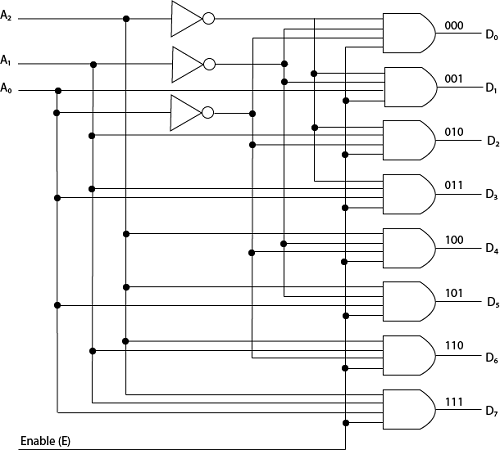COA Tutorial
Basic CO and Design
Computer Instructions
Digital Logic Circuits
Map Simplification
Combinational Circuits
Flip - Flops
Digital Components
Register Transfer
Micro-Operations
Memory Organization
COA_Misc
- Booth's Multiplication Algorithm
- Branch Instruction in Computer Organization
- Data Representation in Computer Organization
- ALU and Data Path in Computer Organization
- External memory in Computer Organization
- Structured Computer Organization
- Types of Register in Computer Organization
- Secondary Storage Devices in Computer Organization
- Types of Operands in Computer Organization
- Serial Communication in Computer organization
- Addressing Sequencing in Computer Organization
- Simplified Instructional Computer (SIC)
- Arithmetic Instructions in AVR microcontroller
- Conventional Computing VS Quantum Computing
- Instruction set used in Simplified Instructional Computer
- Branch Instruction in AVR microcontroller
- Conditional Branch instruction in AVR Microcontroller
- Data transfer instruction in AVR microcontroller
- Difference between Memory-based and Register-based addressing modes
- Difference between 1's complement Representation and 2's complement Representation
- CALL Instructions and Stack in AVR Microcontroller
- Difference between Call and Jump Instructions
- Overflow in Arithmetic Addition in Binary number System
- Horizontal Micro-programmed Vs. Vertical Micro-programmed Control Unit
- Hardwired Vs. Micro-programmed Control Unit
- Non-Restoring Division Algorithm for Unsigned Integer
- Restoring Division Algorithm for Unsigned Integer
- Debugging a Machine-level Program
- Dependencies and Data Hazard in pipeline in Computer Organization
- Execution, Stages and Throughput in Pipeline
- Types of Pipeline Delay and Stalling
- Timing Diagram of MOV Instruction
- Advantages and Disadvantages of Flash Memory
- Importance/Need of negative feedback in amplifiers
- Anti-Aliasing - Computer Graphics
- Bus Arbitration in Computer Organization
- Convert a number from Base 2 (Binary) to Base 6
- Cache Coherence
- EHCI
- Cache Memory and Virtual Memory
- Electrical Potential and Potential Difference
- RAM and Cache
- SIM and RIM instructions in 8085 processor
- Clusters in Computer Organization
- Data Types and Addressing Modes of 80386/80386DX Microprocessor
Decoders
A Decoder can be described as a combinational circuit that converts binary information from the 'n' coded inputs to a maximum of 2^n different outputs.
Note: A binary code of n bits is capable of representing up to 2^n distinct elements of the coded information.
The most preferred or commonly used decoders are n-to-m decoders, where m<= 2^n.
An n-to-m decoder has n inputs and m outputs and is also referred to as an n * m decoder.
The following image shows a 3-to-8 line decoder with three input variables which are decoded into eight output, each output representing one of the combinations of the three binary input variables.

The three inverter gates provide the complement of the inputs corresponding to which the eight AND gates at the output generates one binary combination for each input.
The most common application of this decoder is binary-to-octal conversion.
The truth table for a 3-to-8 line decoder can be represented as:
The following image shows a 3-to-8 line decoder with three input variables which are decoded into eight output, each output representing one of the combinations of the three binary input variables.

The three inverter gates provide the complement of the inputs corresponding to which the eight AND gates at the output generates one binary combination for each input.
The most common application of this decoder is binary-to-octal conversion.
The truth table for a 3-to-8 line decoder can be represented as:


